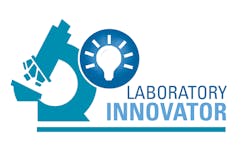Lab director, professor, and Joint Commission surveyor
Are there particular ‘lessons learned’ you can share through your experiences as both a Joint Commission laboratory surveyor and a hospital laboratory director?
What are some of the biggest challenges you’ve faced this year or anticipate facing at your hospitals? What do solutions to those look like?
Besides the COVID-19 pandemic and the resurgence of infectious diseases (from Candida Auris to Methicillin-resistant Staphylococcus aureus, monkeypox, and poliovirus) our most significant challenge by far is personnel. The laboratory technology workforce is aging and retiring and has not been replenished. There is a shortage of technologists across the country, and it is particularly acute in the New York area, where I practice. We have had meetings at the state executive level to ease the very stringent New York State clinical laboratory technologist licensure requirements.
At present, as well as in the future, there is a great deal of difficulty for laboratories across the country to recruit supervisors, managers, and technologists. In my institutions, the administration is cognizant and supportive of the issue. As a result, we recruited per diem technologists, and the compensation level has increased in the past two years.
Of note, we still have a number of job vacancies and not enough qualified candidates. Therefore, we are advertising in pertinent journals of corresponding professional associations and through professional meetings and websites.
How many laboratories are under your direction at Maimonides Medical Center and SUNY Downstate and what are your goals for these laboratories in the next year?
There are two large laboratories of high complexity under my direction. Maimonides Medical Center is the biggest in Brooklyn, including a transfusion and donor center. Donor center draws have been essential in the maintenance of our blood supplies, which were particularly depleted during the COVID-19 pandemic due to the overall paucity of donors. At SUNY Downstate, services include a histocompatibility laboratory, which supports our kidney transplant program, the only transplant center in Brooklyn. In addition, I am responsible for several limited-service laboratories where point-of-care testing is performed.
The number of kidney transplants is increasing dramatically, having doubled in the past year. It is expected to continue growing in 2023. Maimonides Medical Center’s laboratory will expand its reference services and augment its outreach next year—servicing outpatients and private physician offices. It also will open a free-standing emergency center with its own designated laboratory.
How do you effectively delegate responsibilities and communicate with your staff?
My delegation of responsibilities is clearly defined and stated in writing. I am fortunate to have outstanding and dedicated administrators and supervisors for all laboratory areas in both institutions I direct. At Downstate, I have designated directors of hematology, microbiology, blood bank, surgical pathology, and transplant. At Maimonides Medical Center, I count on an excellent blood bank director and an anatomic pathology director. I have monthly performance improvement meetings at both institutions, during which I officially communicate with my staff. Of course, and such is the life of a laboratory director, I am always available by phone or email.
How do you and your colleagues stay abreast of all the rapidly changing technology in laboratory testing?
As faculty at an academic center, I am responsible for training a cadre of 23 residents and teaching myriad students at Downstate, among the largest medical schools, by enrollment, in New York. In addition, I publish scientific papers and attend professional meetings in my field. This allows me to be on top of the latest technologies, be a member of the most important professional associations, subscribe to the most influential journals, and regularly attend meetings—among them the American Association for Clinical Chemistry annual meeting, where I often present posters.
About the Author
Christina Wichmann
Editor-in-Chief
Editor-in-Chief Medical Laboratory Observer | Endeavor Business Media


